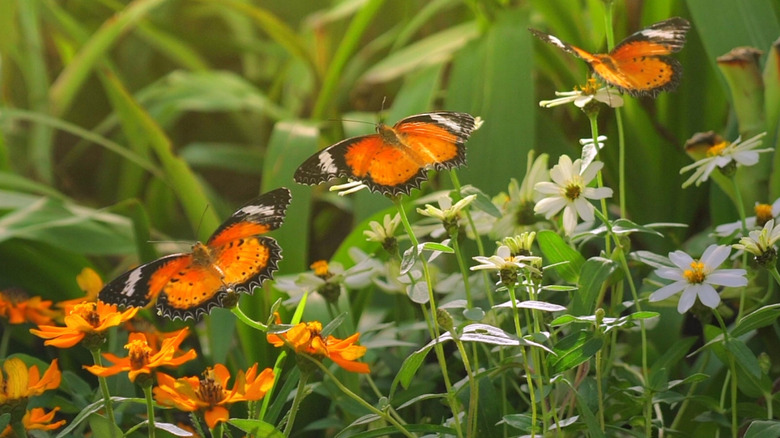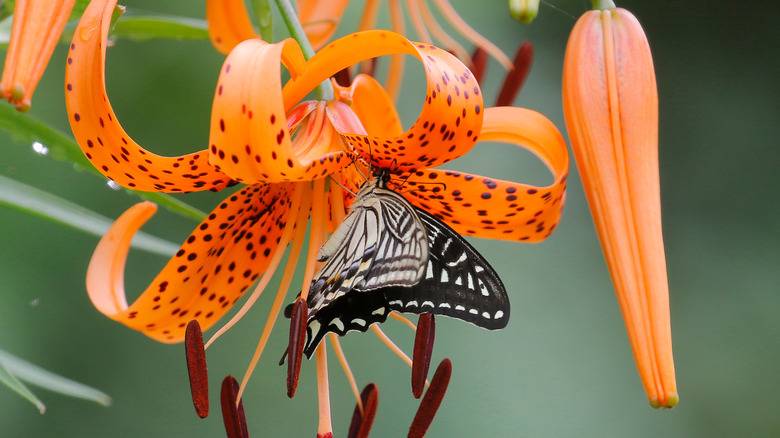The Colors You Should Add To Your Garden To Attract Beautiful Butterflies
There's just something magical about a garden full of blossoms and butterflies. And while there are many ways to attract butterflies to your garden — including putting out fruit for butterflies to grab a tasty meal or filling your garden with plant varieties that butterflies love to munch on, or lay their eggs — the answer to enticing more of these beloved critters is as easy as it is aesthetic. Butterflies are often attracted to very particular colors of blossoms. Mature butterflies love red, pink, orange, yellow, and purple blooms, preferring flat-topped and clustered flowers with short corolla (floral) tubes that are easy to land on and provide ample mounts of nectar.
The reason for this color palette? Butterflies love a good nectar meal, but they also don't want to compete with other pollinators, particularly bees, for their next smorgasbord. Bees can really only see see blues, greens, purples, and ultraviolet, meaning they're not attracted to reds, oranges, and pinks since they can't really see those shades. Butterflies — whose field of vision includes these bright colors — have uninhibited access to these vibrant blossoms, allowing them to drink their nectar in peace. Red flowers, in particular, are a homing beacon for butterflies; The brighter and more vibrant the red, the more the butterfly will want to feed on it. While butterflies may still have some competition (Hummingbirds are attracted to bright reds in gardens), there are a number of vibrantly-hued plants that you can choose from to give your garden a boost of color without creating a rivalry around the nectar.
Colorful plants that attract butterflies
Orange, pink, yellow, and red flowers are truly the sweet spot for butterflies, and daylilies (Hemerocallis) are among a number of plants that display some of the those colors that butterflies love. Daylilies are not preferred by hummingbirds, either — and the deep orange and yellow hues may not be something that bees can easily see, leaving daylilies solely for butterflies to enjoy. Similarly, marigolds (Tagetes) don't attract hummingbirds because of their shape and nectar levels, but butterflies are more than happy to take the meal for themselves, flitting about the rust orange blossoms.
If you're leaning more towards true reds, try red primroses (Primula) in a shade that exhibits deep, ruby red petals with a vibrant goldenrod center. They provide the perfect flat landing space for butterflies to leisurely enjoy a drink of nectar. Butterflies also enjoy similarly hued flowers like zinnia (Zinnia elegans) or petunia (Petunia); Both would be a welcome sight for their shape, color, and food supply.
One of the best flowers you can plant in your garden to help attract butterflies, though, is the pastel-pink milkweed (Asclepias). Milkweed is the only plant that monarch butterflies nest on; They lay their eggs on the leaves and young monarch caterpillars feed on the plant before building their cocoons. While bees are known to be attracted to these blossoms, too, planting milkweed in your garden helps sustain monarch populations, giving them a place to land (literally). Whichever bright bloom you choose, whether to serve as a monarch butterfly home or to provide copious amounts of nectar, your beautiful butterfly guests will be pleased!

